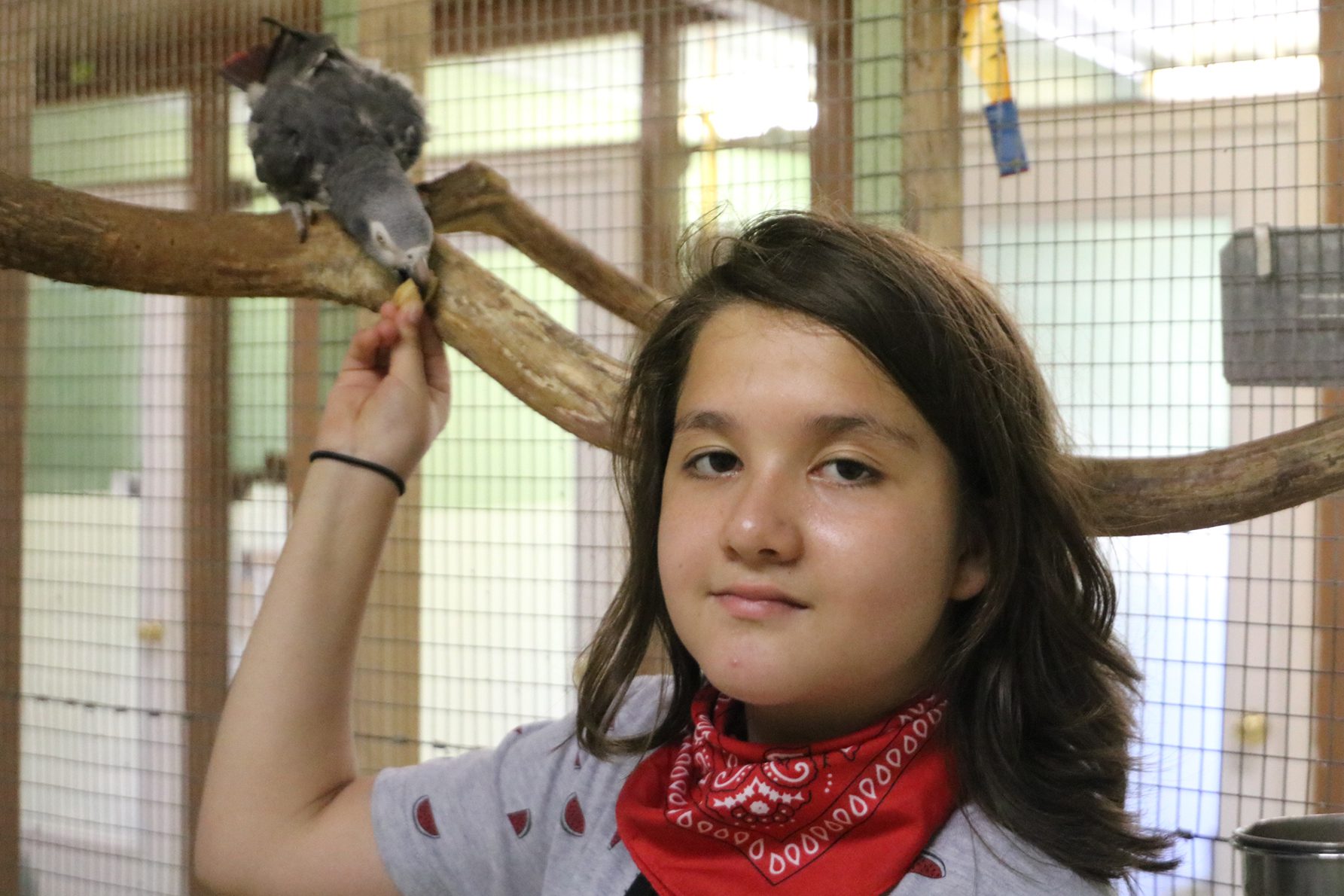Timneh African Grey
Psittacus timneh
African Grey Parrots have mainly grey bodies, though the shade of grey can vary. Their tail feathers, though, are a bright red. They have black beaks and featherless white face patches. The Timneh species tends to have a darker tail and a silvery iris. Their natural habitat is the wet lowland forests on the west coast of Africa. They tend to stay on the forest edges and nest in tree holes.
These parrots can breed once or twice a year, depending on the resources available. The female will incubate the nest while the male will protect them and find food for the female. The chicks are altricial, meaning that they are completely helpless when born and need constant parental care for 4-5 weeks after they are born. They still won’t leave the nest for another two months, when they finally fledge. Once able to fly, the young will still live with the family and not be truly independent until they reach about 3 years of age. They live 40-50 years, living longer in captivity.
African greys are considered of the highest intelligence for all animals. A famous study, using a bird named Alex, found that they are capable of learning how to communicate with humans beyond just mimicking speech.

Timneh African Greys are native to the western coastal region of northern Africa.
HABITAT -They are found in wet lowland forests on the western coast of Africa.
DIET -They are herbivores, eating nuts, fruits, and occasionally bark and flowers.
FUN FACT -Some grey parrots can actually be red.
SOCIAL BEHAVIOR -They can be shy to humans but live in large groups with each other.
ACTIVITY -They tend to be diurnal to crepuscular, being active during the day.
PREDATORS -Monkeys, vultures, and large birds of prey are known to predate them.
SIZE -They tend to weigh less than a pound with a wingspan of 7-8 in.
RELATIVES -They are in the same tribe as other Old World Parrots that are found in the tropics of Africa.
CONSERVATION -Grey parrots are listed as Near Threatened under the IUCN.
Cub Creek Animal Care Information
Housing - Our Timneh, Zoe, is housed in a large enclosure in the Jungle with plenty of trees to perch on and space to explore. This gives her the ability to fly around, as she naturally would, or chill out on a branch and practice her perching. She lives with a Goffin’s cockatoo as well; the space is large enough to accommodate both of their activity levels.
Diet - To ensure they get all the necessary nutrients, our birds are fed ZuPreem FruitBlend large bird pellets as well as fresh fruits and vegetables such as apples, bananas, shredded sweet potato, and greens. They also love getting peanuts as a treat! They are given access to fresh water everyday.
Enrichment - Parrots are very intelligent birds and therefore need lots of enrichment to keep them entertained. Their cages are filled with various hanging toys they can rattle and hang on; they love being given paper to shred. Just about anything that campers can make out of cardboard, chains, or nest boxes the birds will enjoy!


